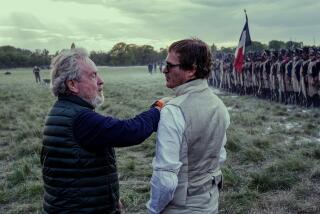Director Tony Scottâs skillful remake of âPelham 123.â
Tony Scott is a director who makes the trains run on time. Not just the specific subway cars of his efficient thriller âThe Taking of Pelham 123,â but the metaphorical trains of action movie pyrotechnics in general.
Though heâs worked somewhat in the shadow of his more thematically adventurous brother Ridley, Scott has earned his Hollywood reputation as a shooter, someone who knows how to make things move like lightning on screen.
Collaborating here with stars Denzel Washington and John Travolta, Scott puts those talents to use in this crisp, effective New York subway hostage drama. Itâs not the kind of film that dominates at the Oscars, but âPelhamâ is so professionally done you rarely have the luxury of taking your eyes off the screen.
From âPelhamâsâ opening credits to its conclusion, you can feel Scottâs small-boy excitement (aided by Chris Lebenzonâs skilled editing and Harry Gregson-Williamsâ score) at making things pop off the screen. No one takes more pleasure in the vivid display of squad cars and their squealing tires or the purposeful careening of police motorcycles.
Because he is a shooter first and foremost, Scott is often only as good as his scripts, and his best films -- âCrimson Tide,â âEnemy of the State,â âMan on Fireâ -- tend to be the ones that are based on the best-written material.
So itâs not an accident that âPelhamâ has good things going for it in that department. The original source, John Godeyâs 1973 novel, was the basis of an excellent film starring Walter Matthau and Robert Shaw.
And current screenwriter Brian Helgeland, who wrote Scottâs âMan on Fire,â counts both âL.A. Confidentialâ and âMystic Riverâ among his credits.
The fact that this is a hostage drama makes âPelhamâ stand apart from most of Scottâs work, with its reliance on tension created by words, specifically the back and forth of ransom negotiations.
So itâs fortunate that the film has stars with the ability to hold our attention even though they are almost never in the same physical space (and, in fact, didnât even meet in the studio until the seventh week of shooting).
Itâs Travoltaâs Ryder we encounter first, looking malevolent as all get-out as he glides down the streets of New York sporting a Fu Manchu mustache, dark sunglasses, a wool cap pulled low on his head and a prison tattoo on his neck. âHairsprayâsâ Edna Turnblad this is not.
Ryder and his team of miscreants are headed for a rendezvous at a train on the Lexington Avenue line, the Pelham 123 to be specific, filled with ordinary New Yorkers who have no idea they are on the way to subway hell.
Ryderâs opposite number, looking as menacing as a grilled cheese sandwich, is soft and paunchy subway dispatcher Walter Garber, played by Washington as the kind of guy who wears a bib napkin while eating lunch at his desk.
This type of hesitant role is a change for Washington, but as an actor who drips charisma just sitting in a chair, he is well within his comfort zone.
While Garber is busy spilling coffee on himself, Ryder and his gang are commandeering that subway car and its 19 hostages and calling in their ransom demand: $10 million (up from the $1 million in the 1974 film) to be delivered within an hour, or else people are going to die.
Itâs pure happenstance that Garber gets the call, but Ryder, with that quirkiness common to movie psychopaths, takes a shine to the guy and refuses to share his deep thoughts like âwe all owe God a deathâ with anyone else.
Ryder wonât talk to ace NYPD hostage negotiator Vincent Camonetti (John Turturro); heâll barely talk to the mayor (an excellent James Gandolfini). Itâs Garber or nobody, and so the dance between unexpected antagonists begins.
The third star of âPelhamâ is the venerable New York City subway system. Anchored by strong work by cinematographer Tobias Schliessler, the crew filmed on the subway for four weeks, the most extensive shoot there ever, and the result is formidably convincing.
It almost goes without saying that âPelhamâ has its problems, including some clunky plot elements and a phenomenal amount of coincidence. But faced with these difficulties, the film does what a good hostage negotiator does: It distracts us from whatâs going wrong and pulls us into the story. Films that can do that are few and far between, and getting fewer, so when this one pulls into the station, feel free to get on board.
--
More to Read
The biggest entertainment stories
Get our big stories about Hollywood, film, television, music, arts, culture and more right in your inbox as soon as they publish.
You may occasionally receive promotional content from the Los Angeles Times.











